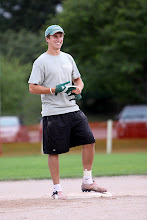1) Gibb’s Criteria to evaluate Main Street: A) small details- Gibbs first notices neatly painted trash cans and vending machines. These small details provide a sense of comfort to the consumer; B) generators- stores that encourage other businesses to move into the area. These stores set a trend and attract a certain demographic whom other stores could benefit from; C) incubators- local stores that create a sense of home and attract local business; D) be aware of stereotypical success- many things that look nice can detract from a store’s ability to sell products. Things can look so nice that people spend more time looking at them than at the stores. Architects often create designs that satisfy people’s senses. Gibbs argues that the design must make people feel comfortable but should not steal their attention from stores; E) Clear, open walkways- people don’t want to maneuver around objects, this also takes their attention from stores or keeps them away from that area; F) create a sense of safety- people must feel safe (i.e. police stations, people in uniform, cameras, etc.); G) no straight walkways- customers should always be looking at merchandise. A straight walkway means that they are looking at nothing; H) create a confident image- window displays should be quaint and definitive, creating a sense of class. Windows should have signs displaying brand names, giving the consumer confidence in the store; I) street must have a purpose- a street must have a purpose to direct traffics through it. By connecting two points of interest a street will be used by more people; J) size- the street must have enough space to encourage stores and the resulting shoppers. If a street is too small without many shops it will not be worth visiting.
2) Should Main Street be a mall? In a way it already is. Once a driver gets off the highway, they encounter store after store accompanied by numerous restaurants. Not only are there many mall-like establishment, but the area meets many of Gibb’s standards. Main Street is, as its name suggests, a main street. The majority of traffic coming into and out of Kalamazoo is routed down Main Street. When thinking about the street, I can’t recall any great architectural design, but at the same time I can’t think of any design flaws. Going along with that observation, Main Street is not designed to have attractive architecture, but rather unnoticed architecture. With police constantly patrolling the street, it seems ridiculous to feel at all unsafe. For the most part, signs are neatly displayed along the road and on top of buildings. This makes it easy to locate a single store from several blocks away. Main Street is home to many generators and incubators as well. This creates a sense a trendy-ness along with some local flavor. As for size, Main Street has plenty of that, covered by stores for mile after mile from 131 to K College.
Now that I realize I wasn’t supposed to write about the literal Main Street I am a little embarrassed. But I think I showed that I understand Gibb’s points and have applied them to an actual street.
3) Dane’s 5 most important evaluations: A) busy- must attract traffic and pedestrians. B) neat- people must feel comfortable and not feel invaded. C) simple- too much can distract a customer’s attention, but it should still look nice and organized. D) visibility- stores must be seen by everyone, thus straight streets are not a good idea. E) generators- stores must be in place to attract a certain crowd and to encourage other, smeller businesses to enter the area.
Sunday, November 1, 2009
Subscribe to:
Post Comments (Atom)

No comments:
Post a Comment